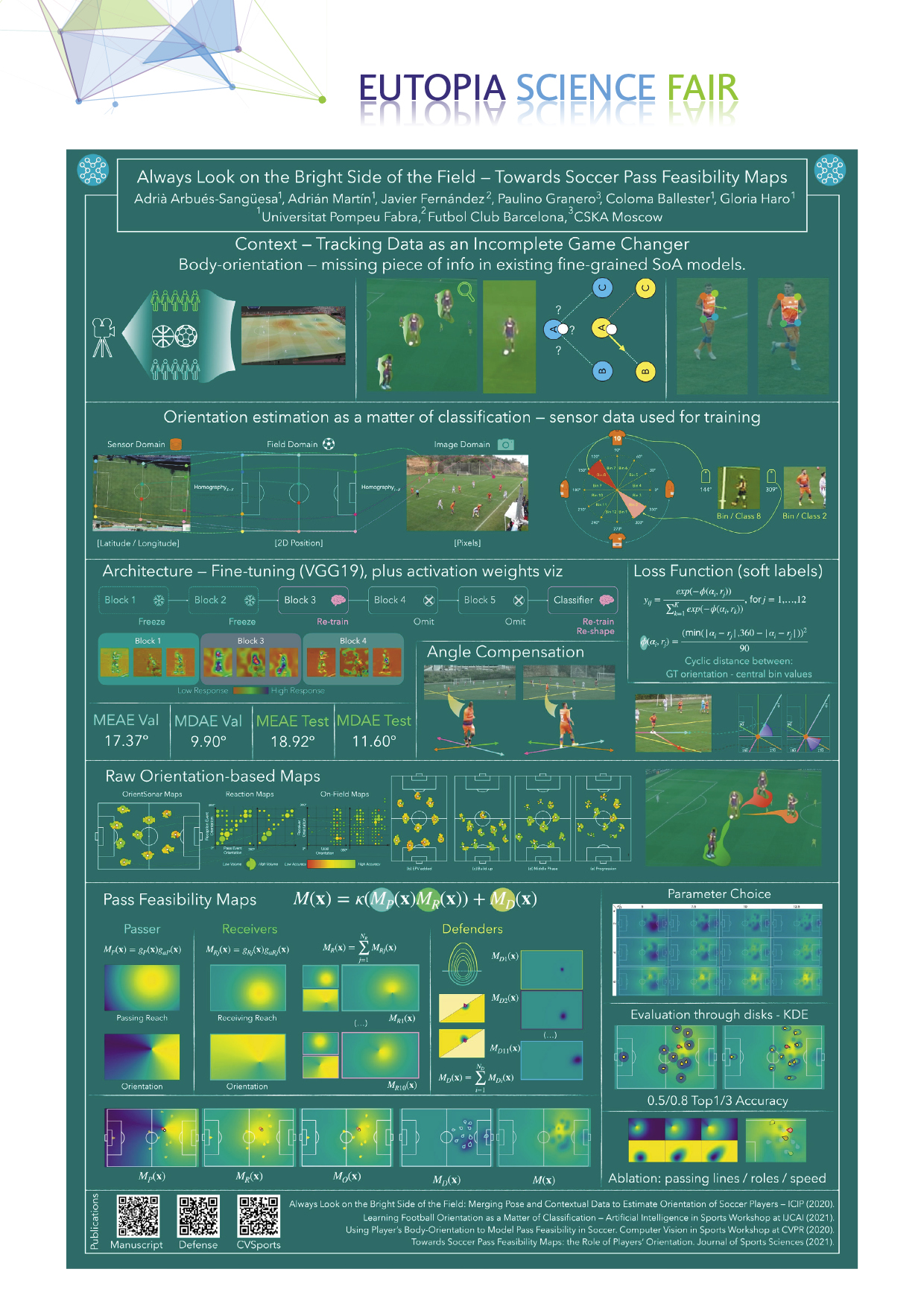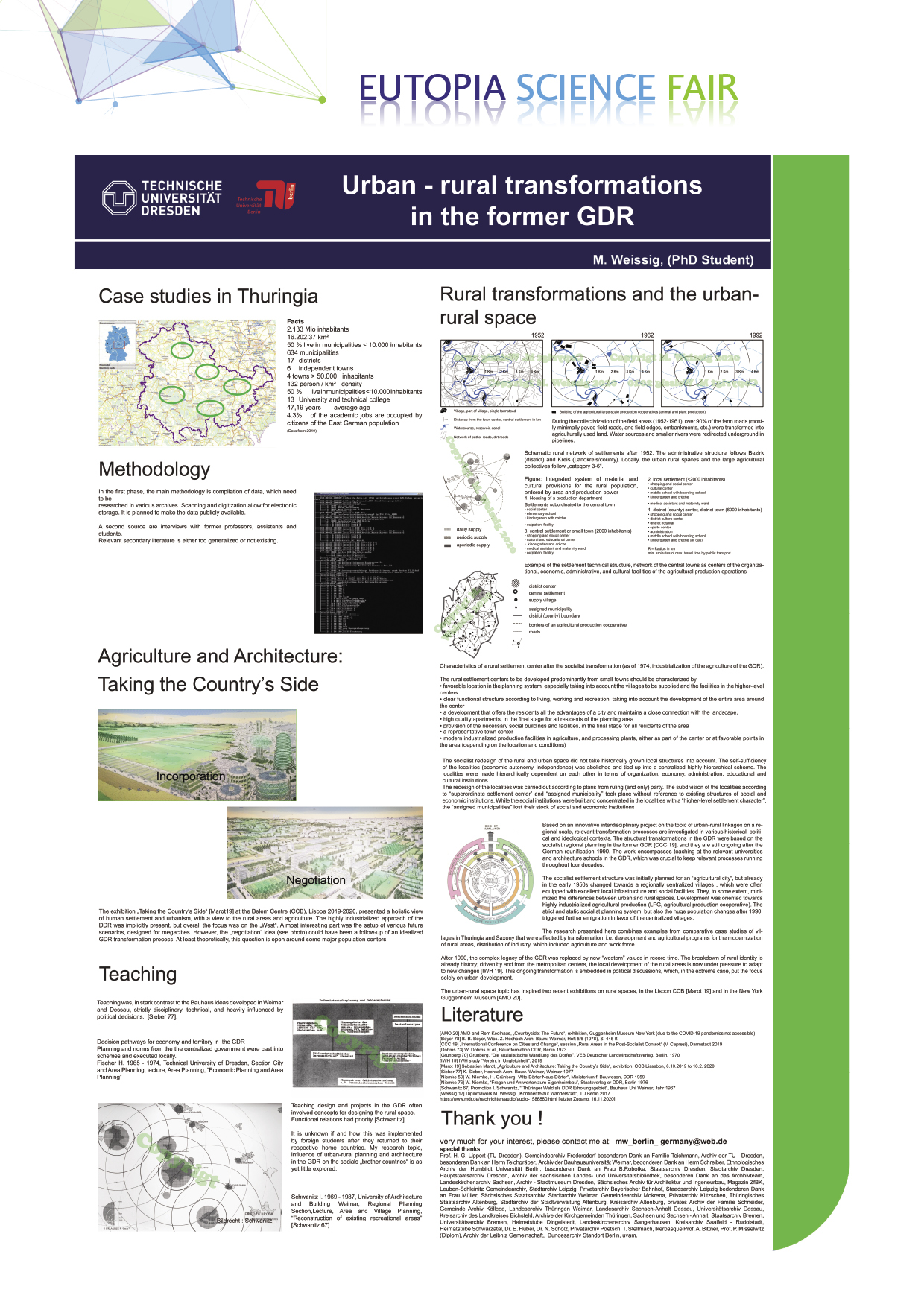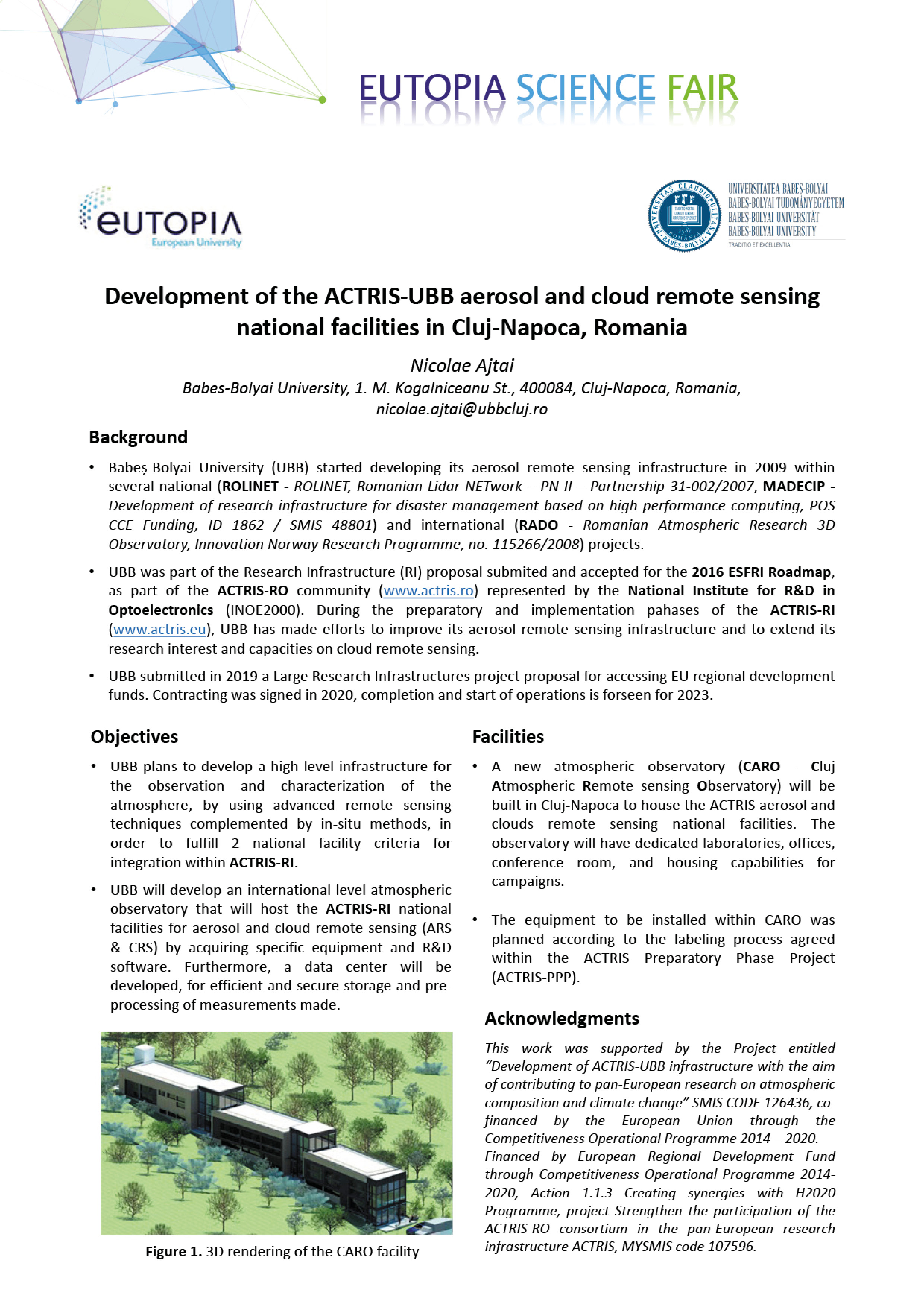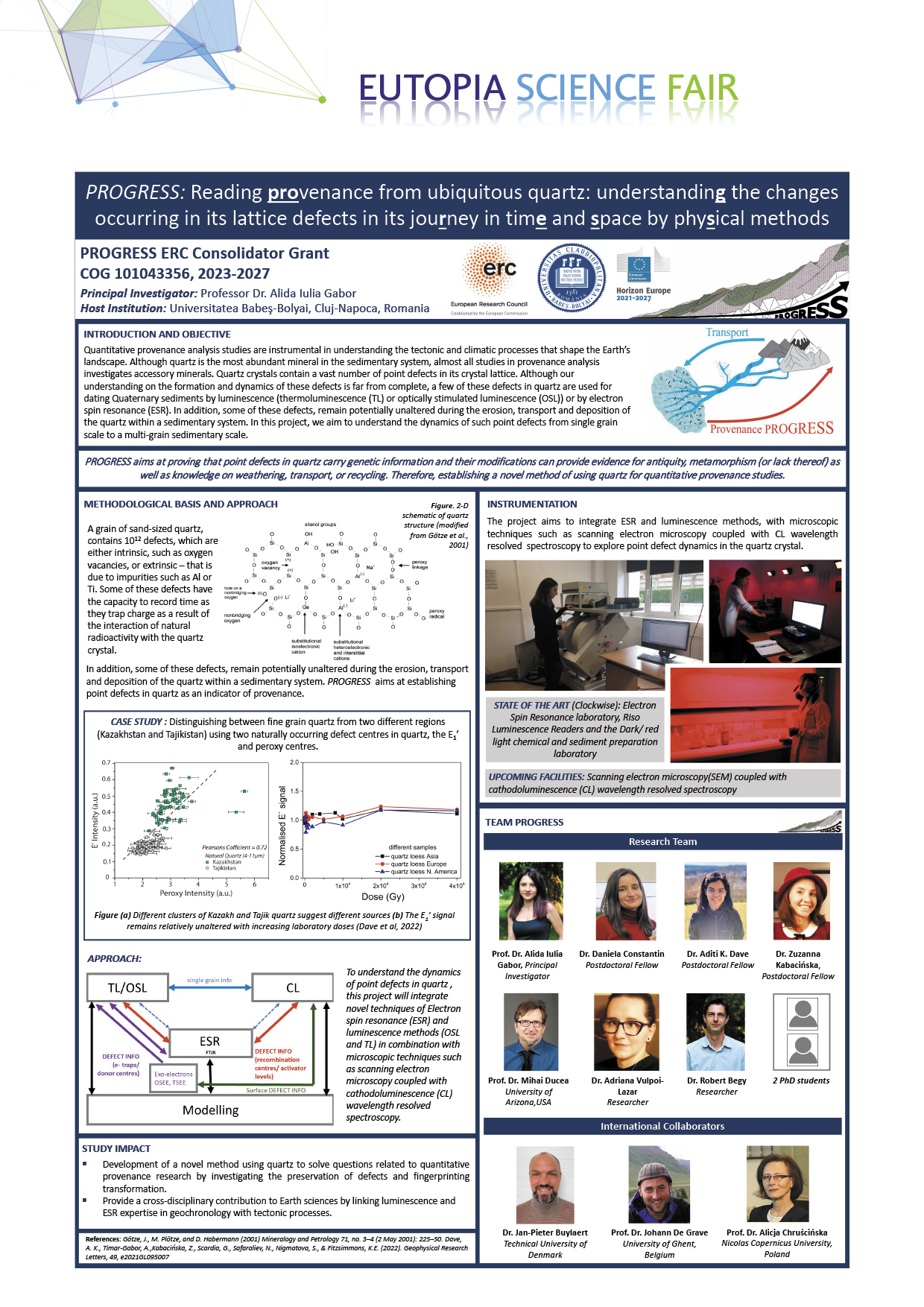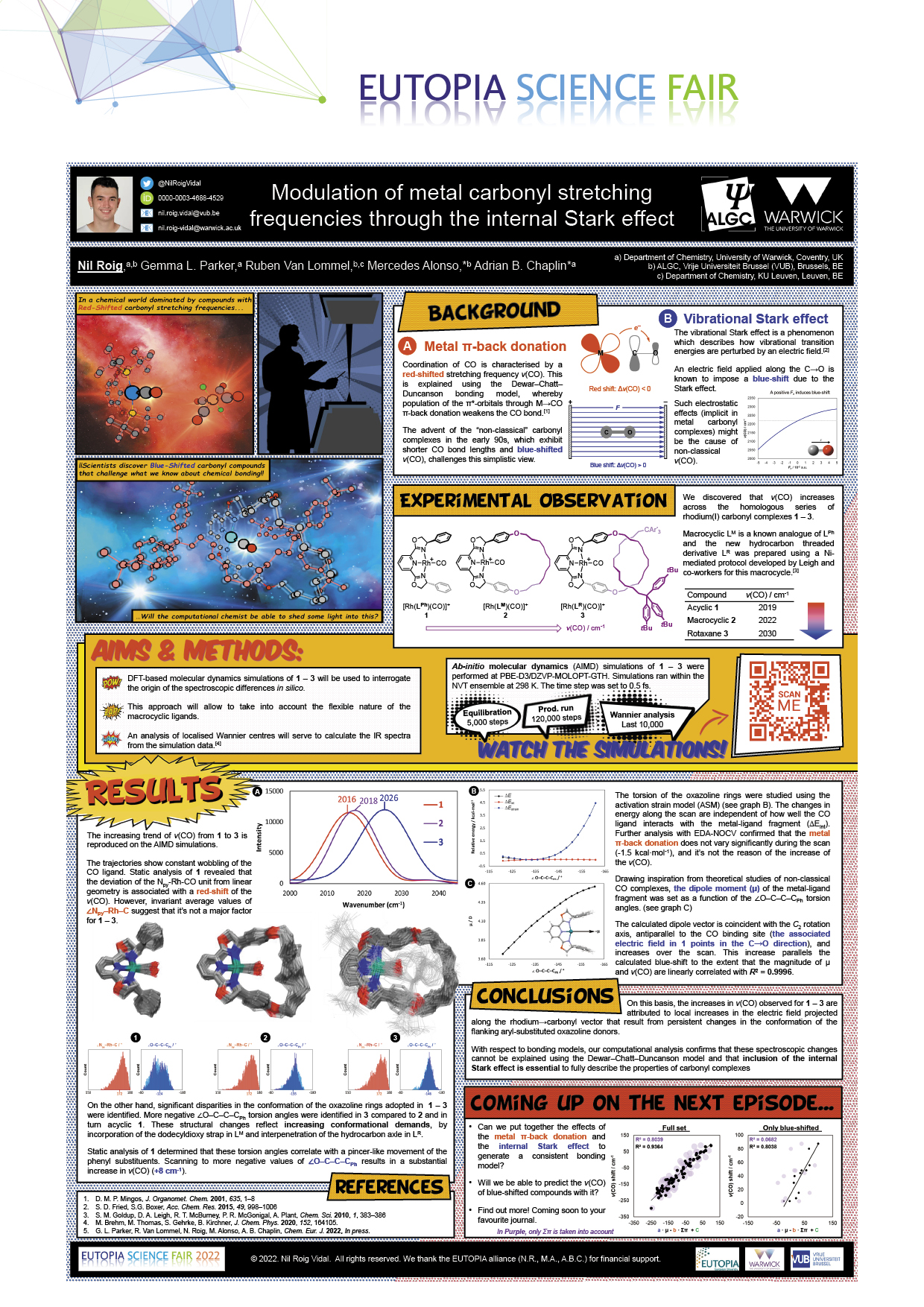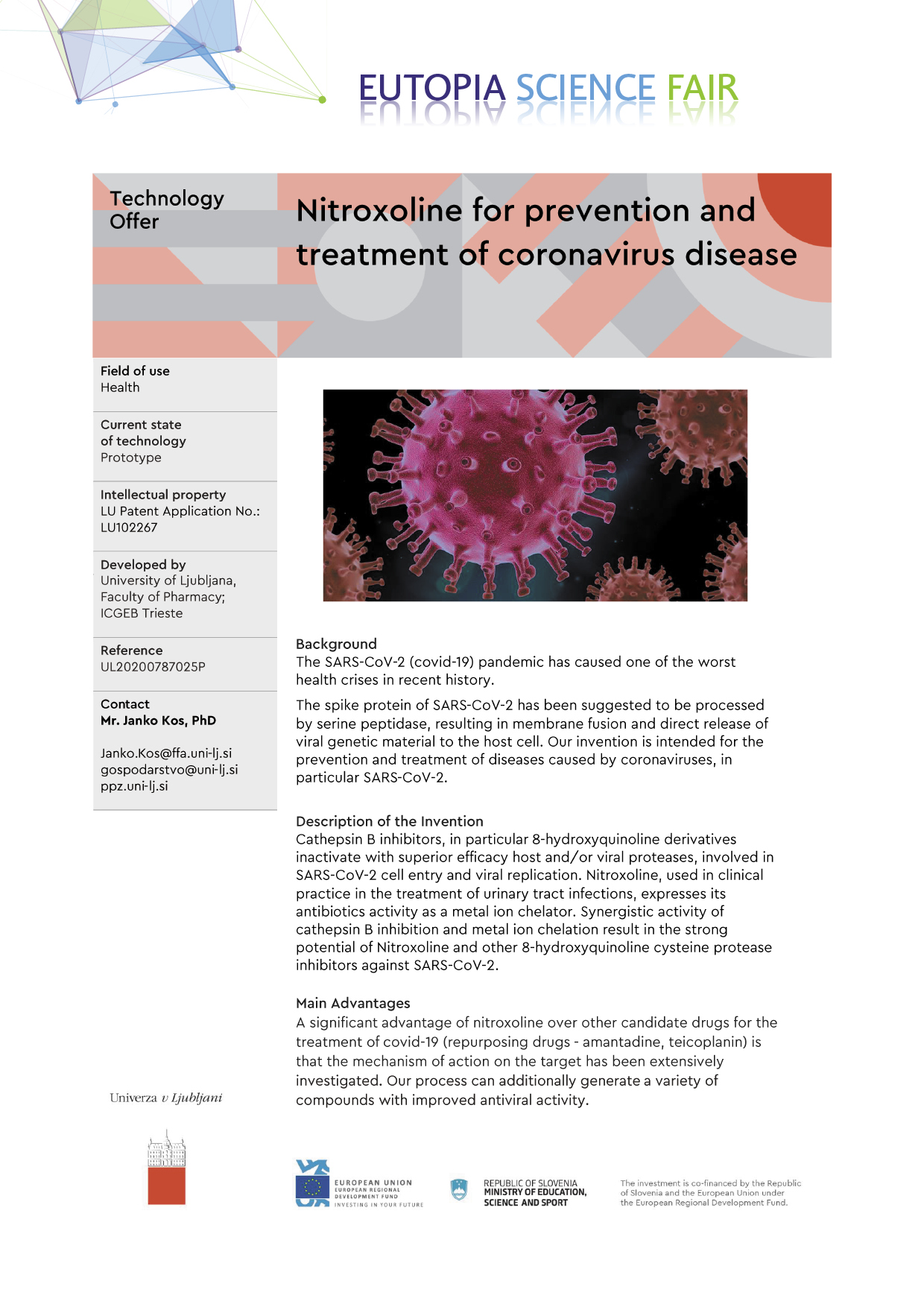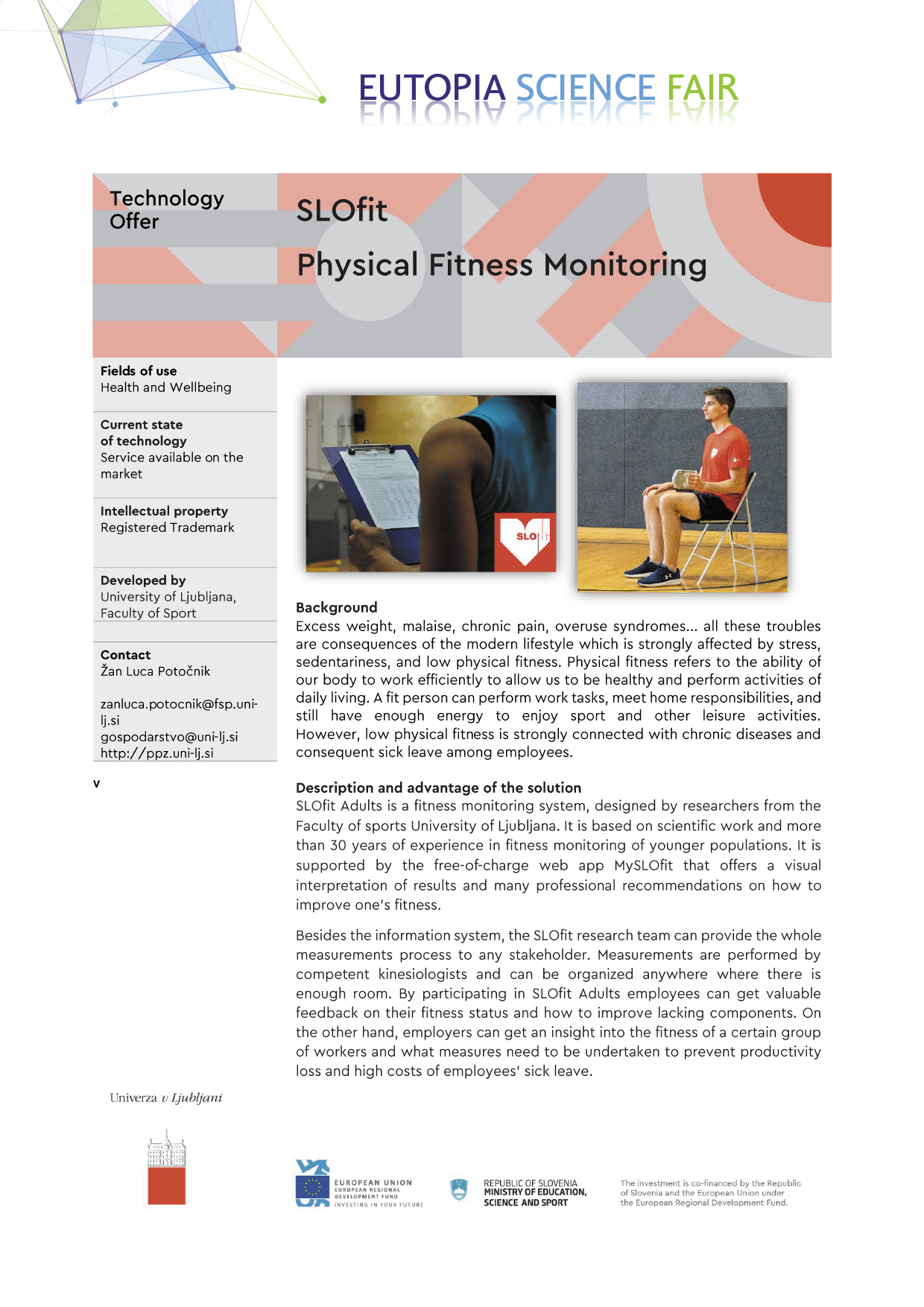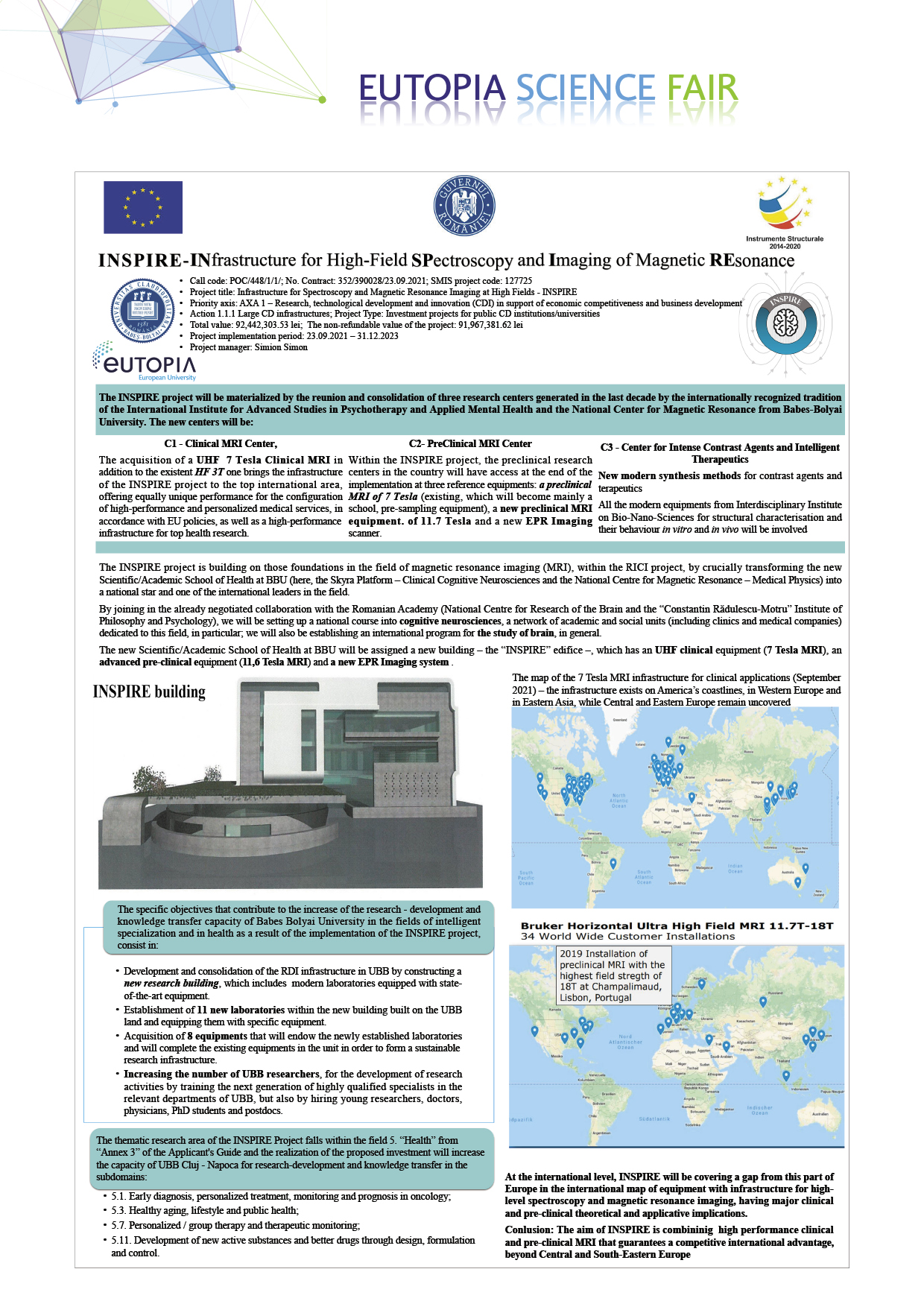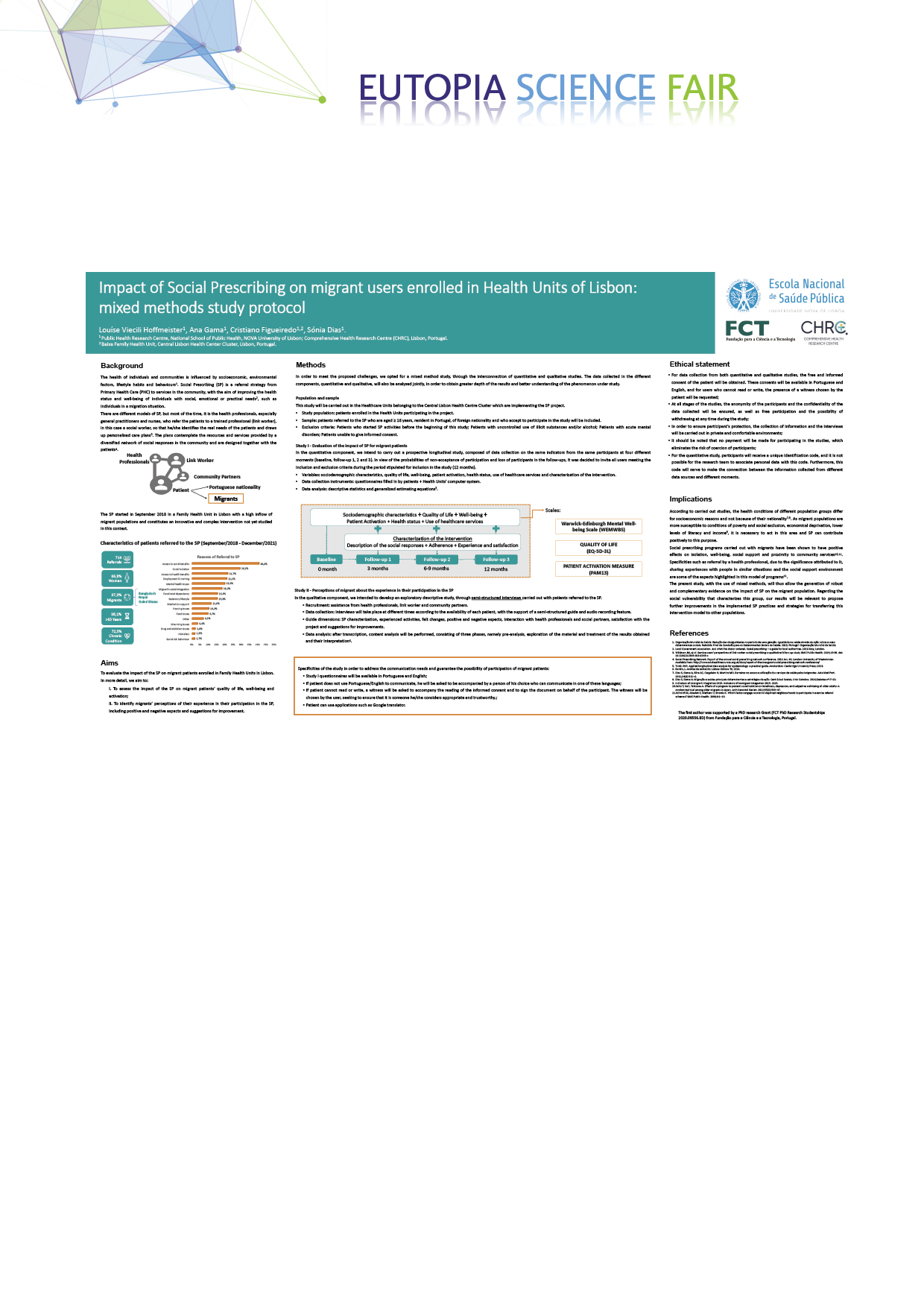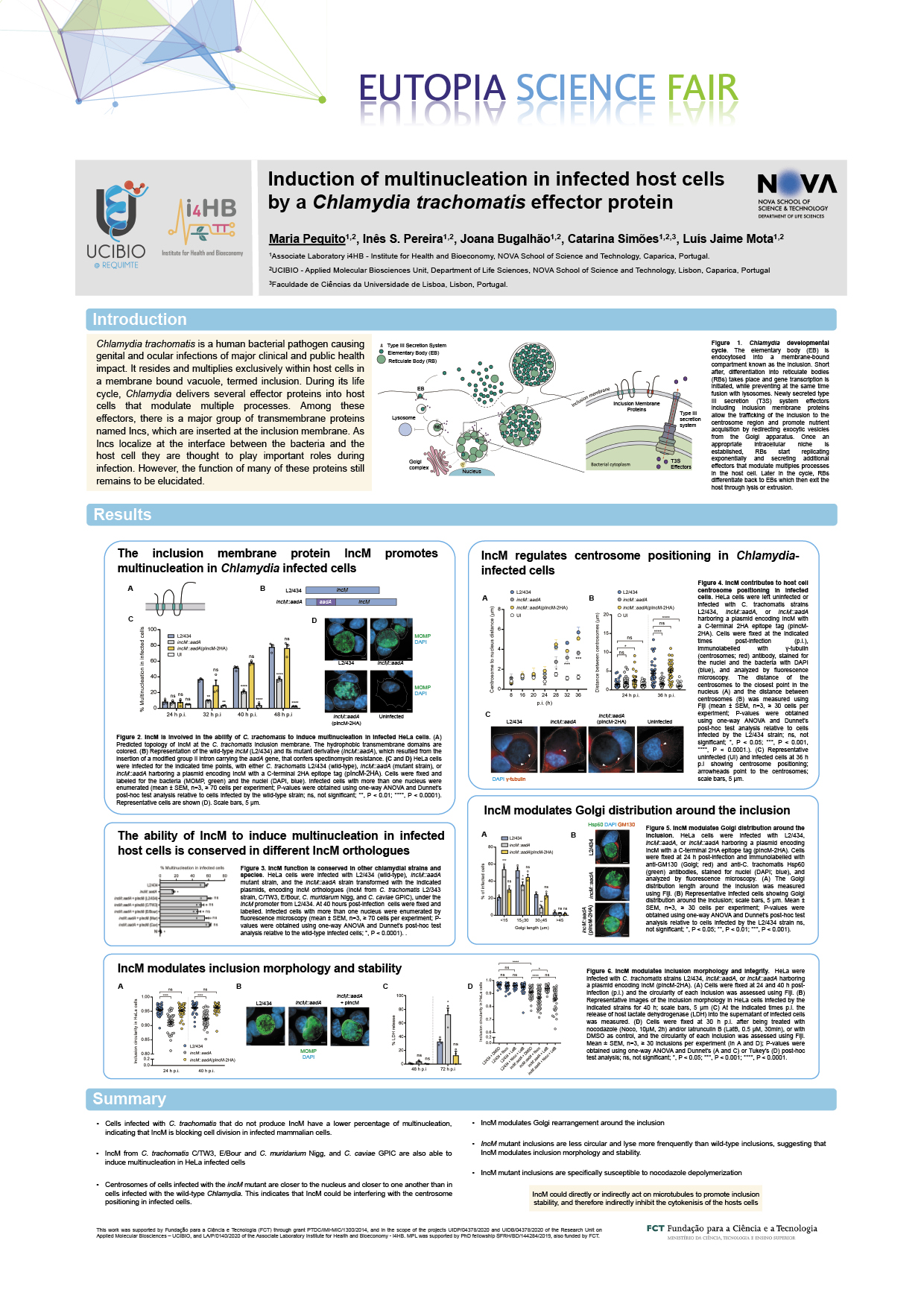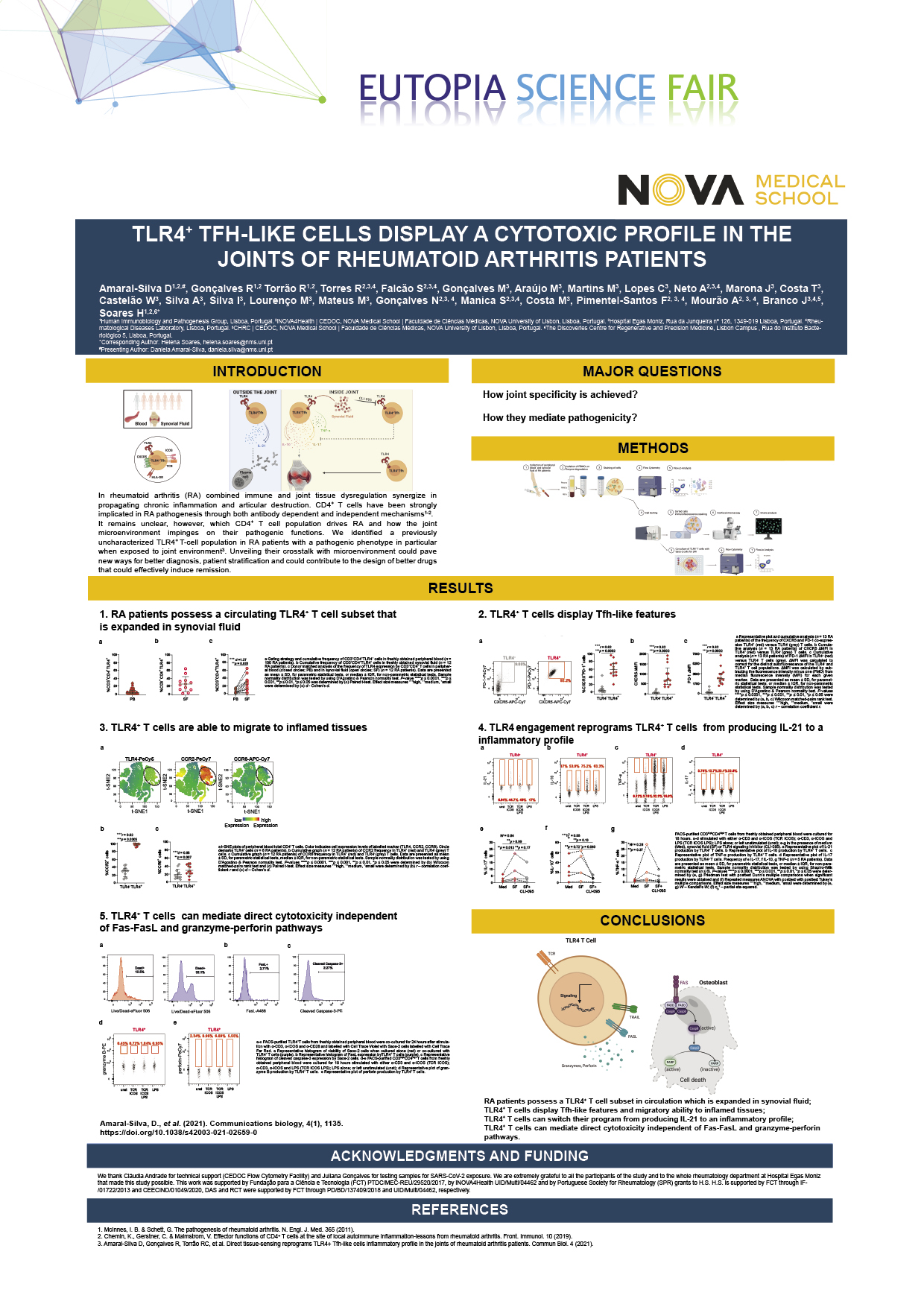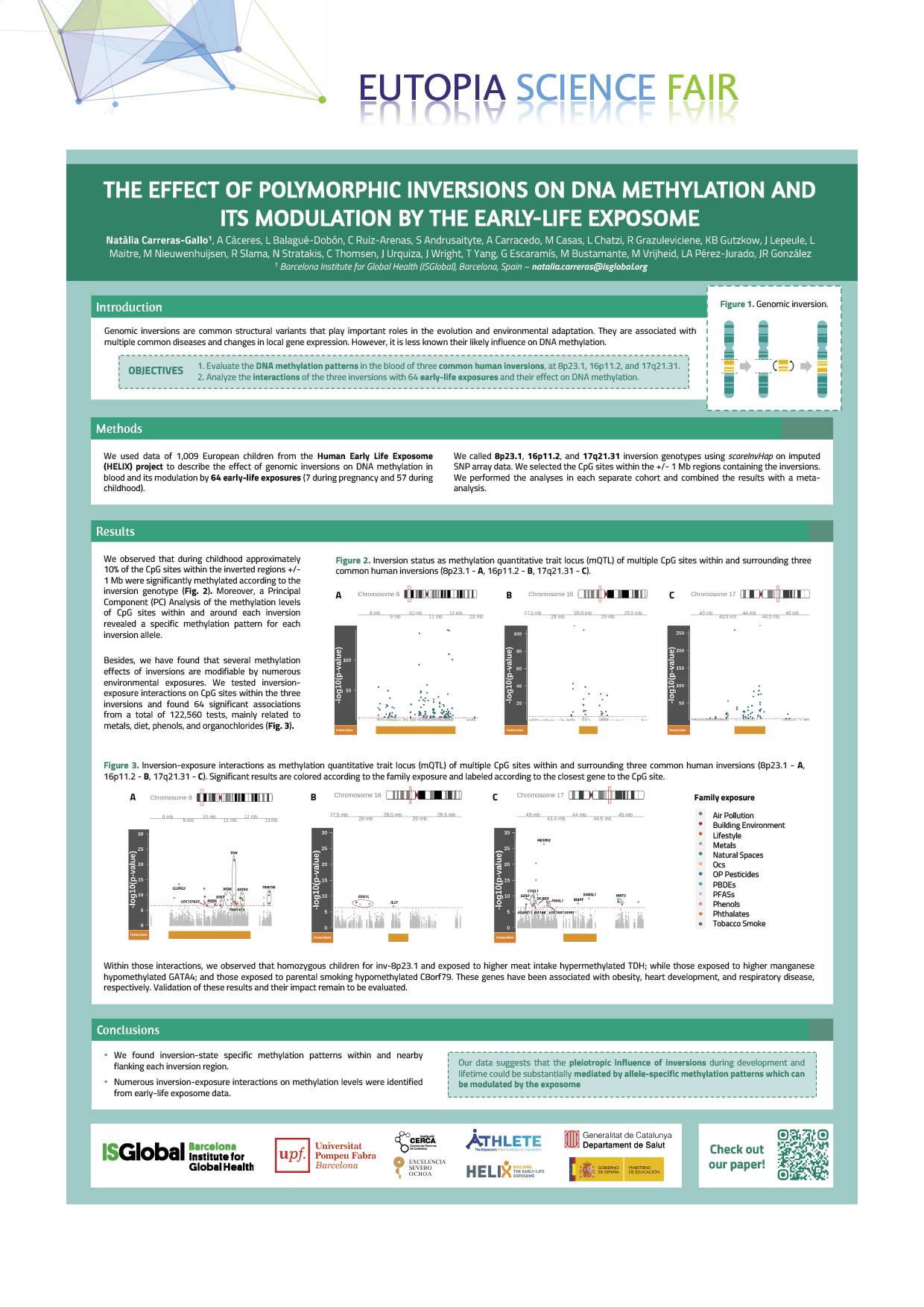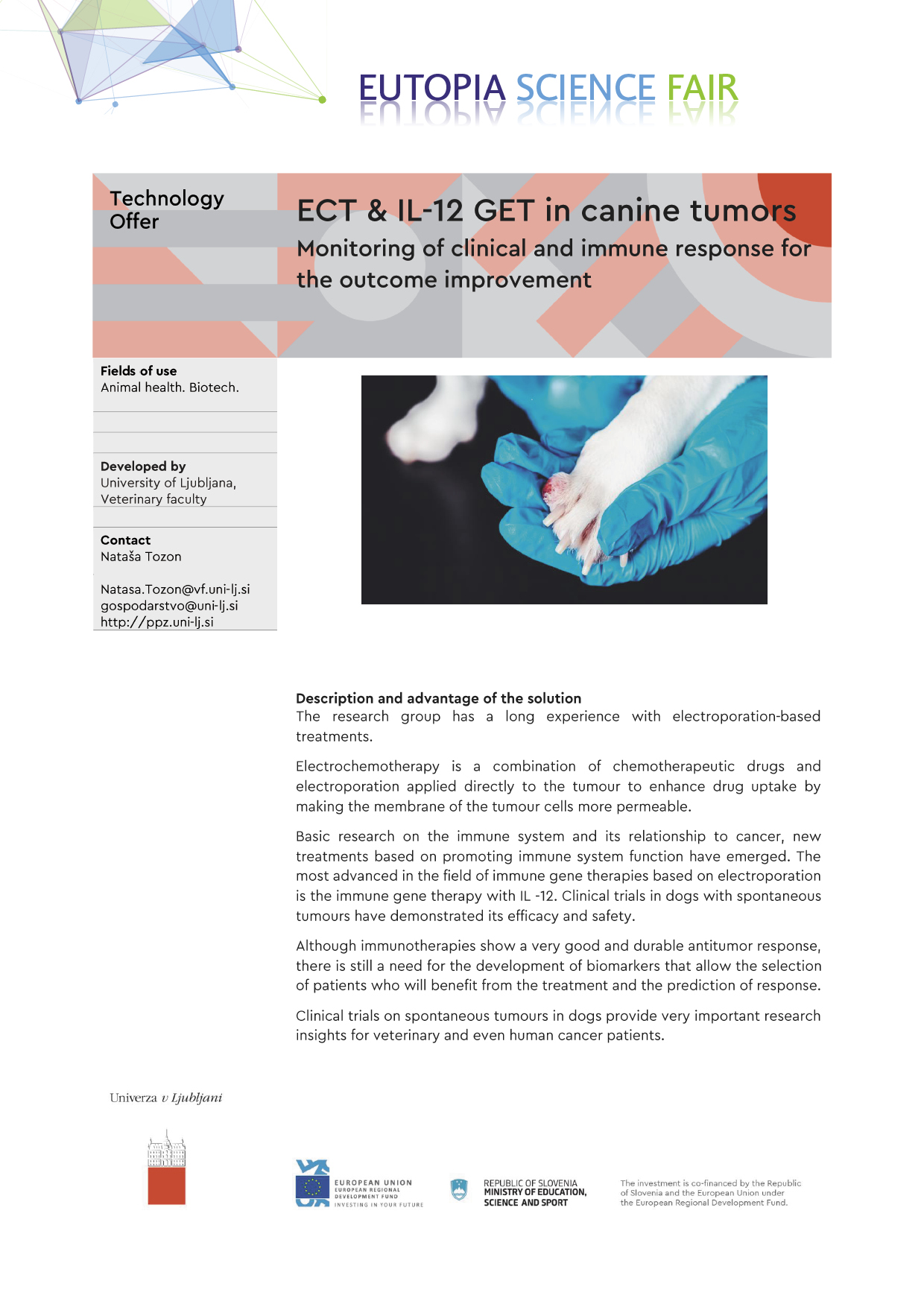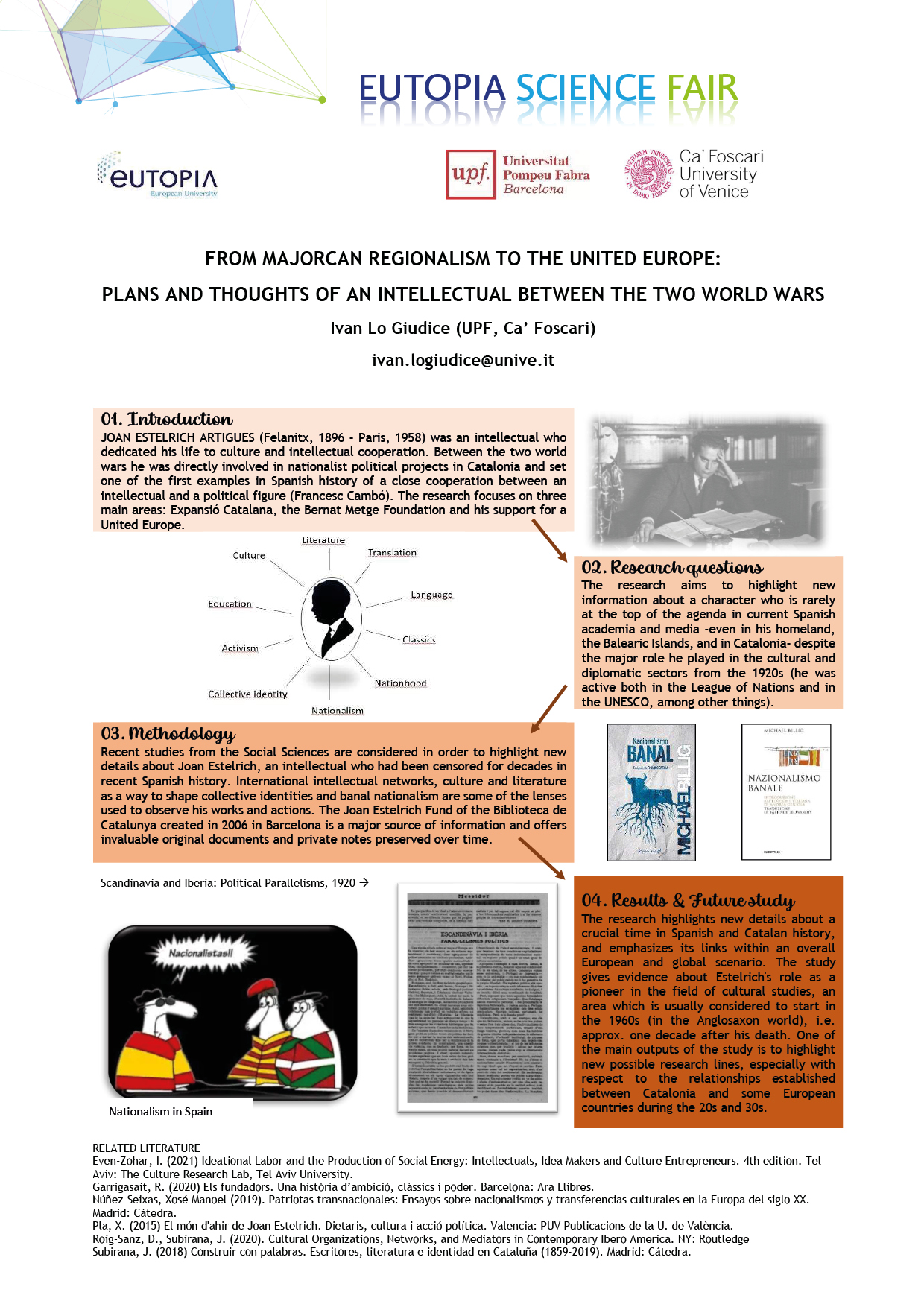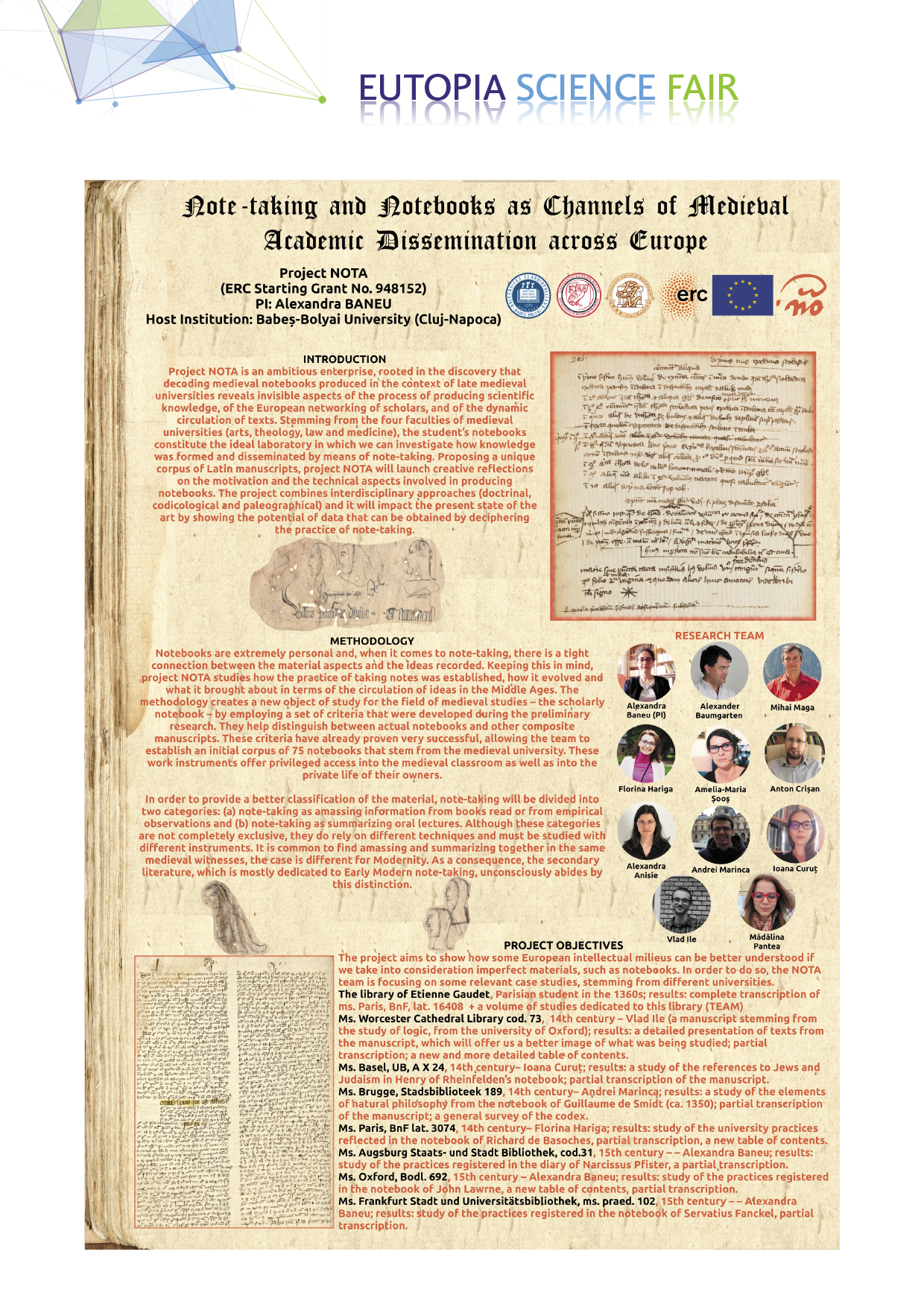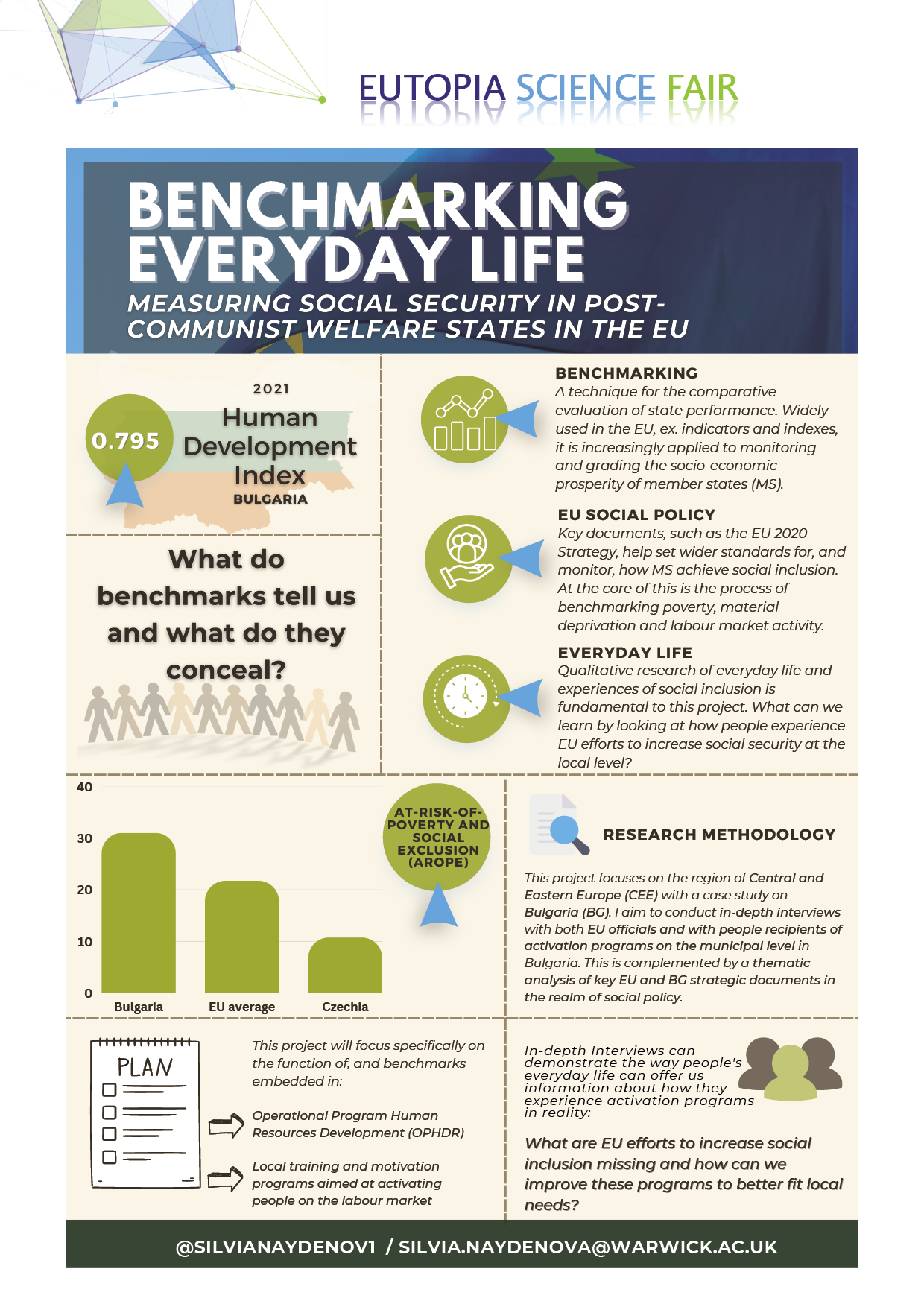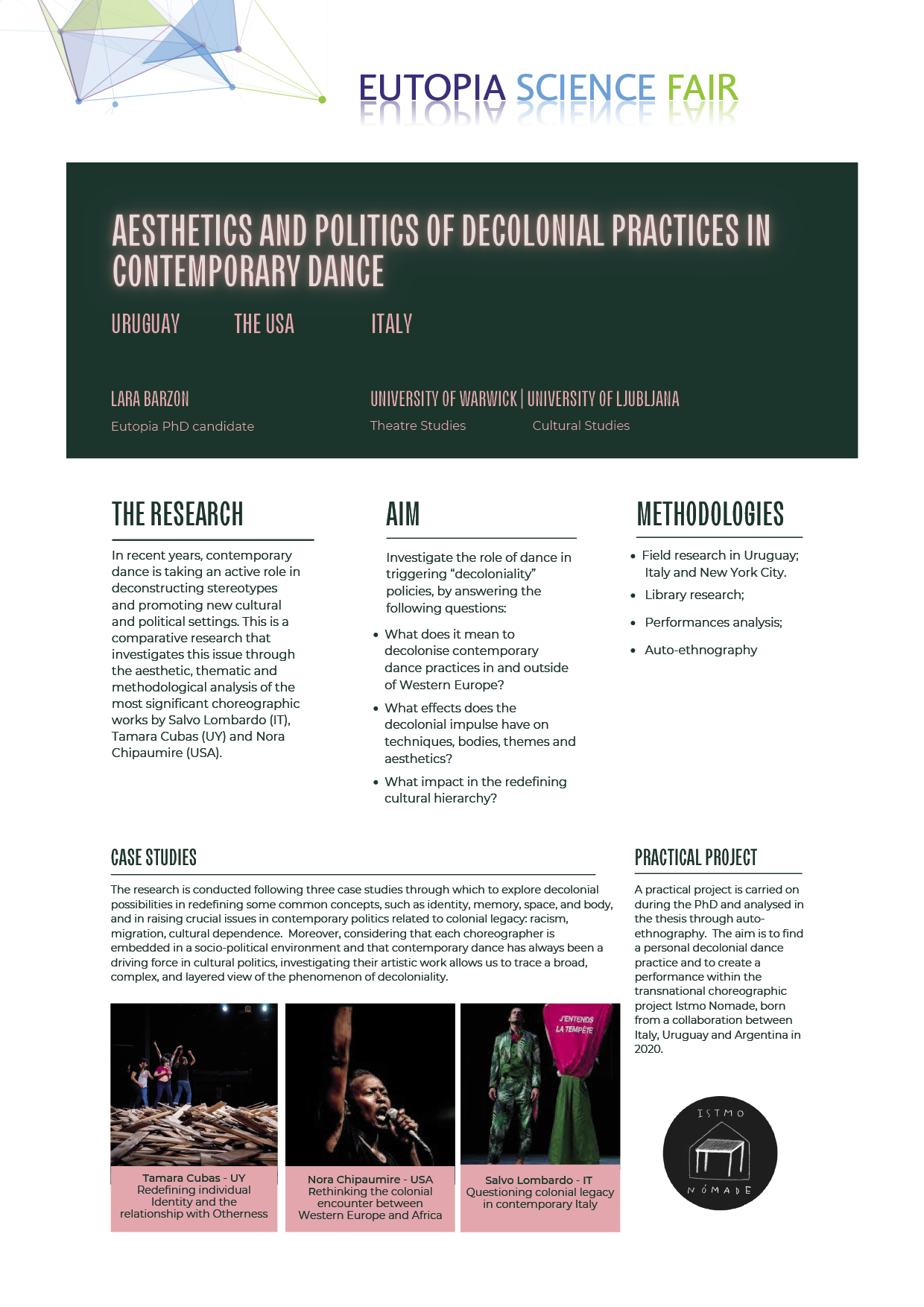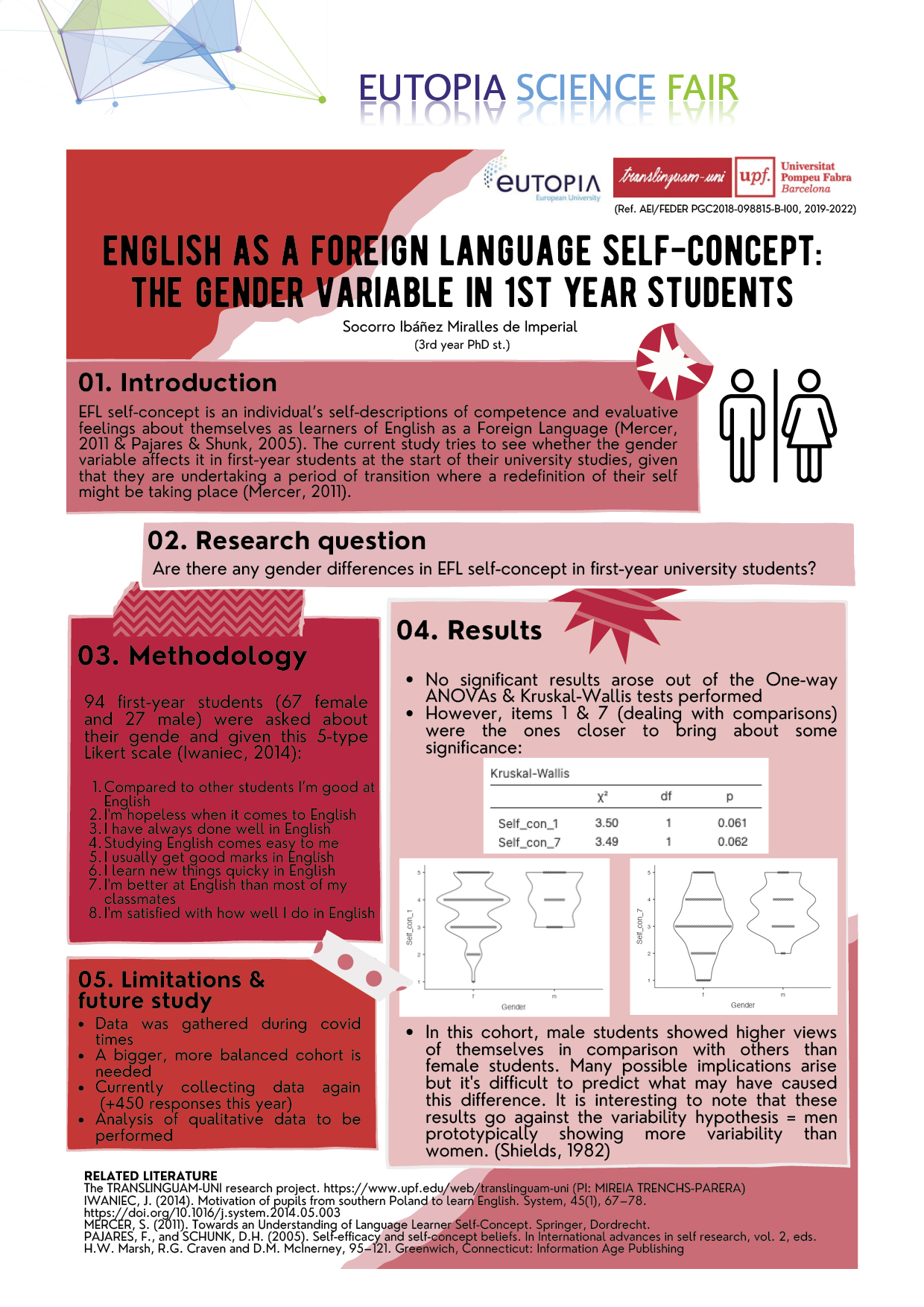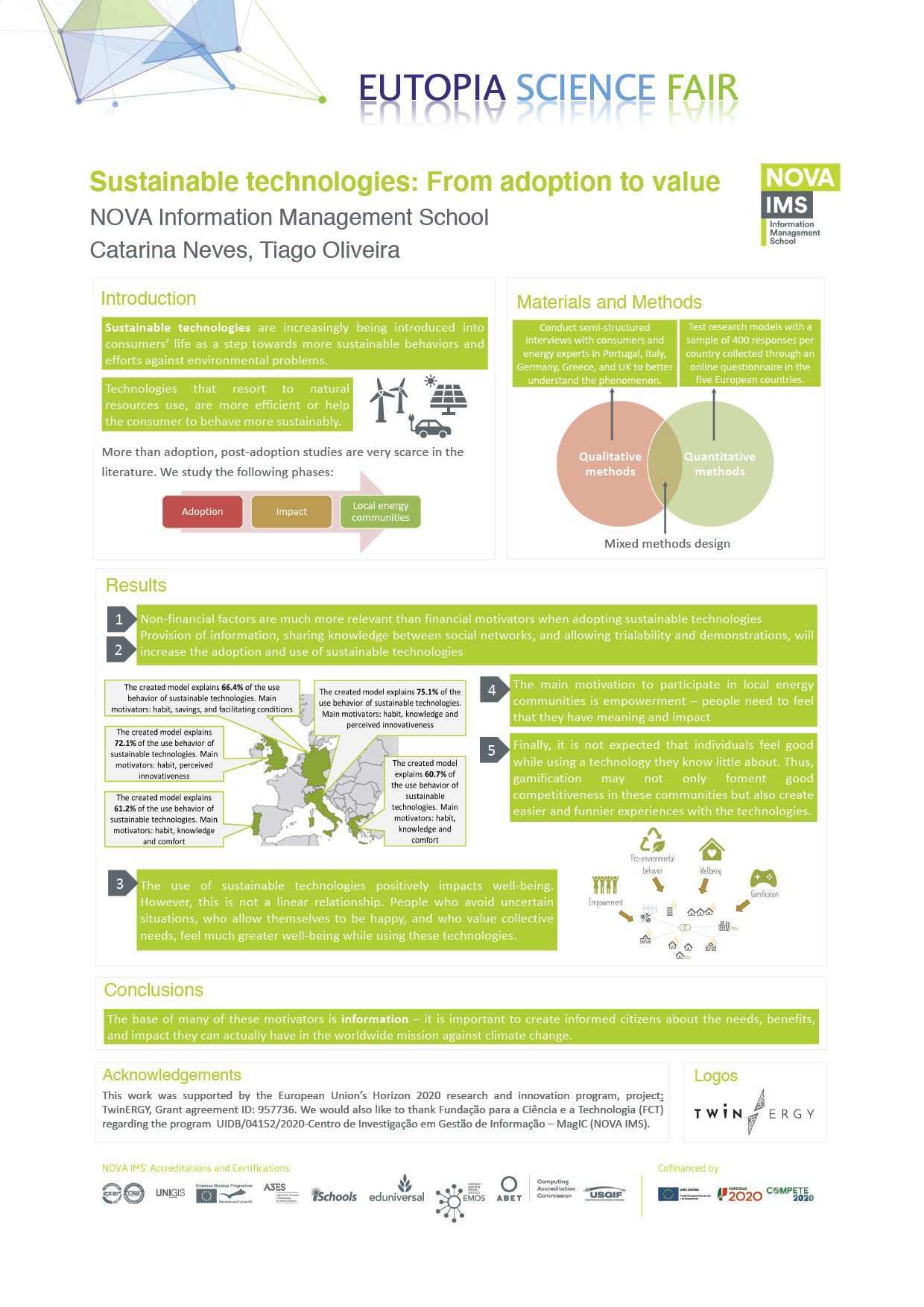You are here :
Science Fair 2022

- 1. Physics, Engineering & Architecture
-
- Smart infrastructure will never stay out of tune
-
Maximillian Weil, Vrije University Brussels
For thousands of years, humans have been building huge structures such as bridges, dams and wind turbines to overcome the hardships of nature. But unfortunately, if not monitored properly, most structures will fail and collapse.But what can we do about this?
All structures vibrate to their own beat. For example, when when the blades of a wind turbine turn it will generate electricity. But, this also introduces vibrations in the whole structure. Whilst most vibrations are harmless for the structure, or as the Beach Boys would call them, the ‘good’ vibrations. Unfortunately, there are ‘bad’ vibrations that can indicate if the turbine is building up damage in its structure.
My research aims at distinguishing good and bad vibrations. By placing sensors in the top, middle and bottom of the turbine we can measure these vibrations, and detect changes or novelties in the vibrations. This is done by using machine learning.
But what is machine learning?
Think of it as a pianist who has spent many years training his musical ear. When he later plays a note on the piano, such as a ‘do’, he will recognize it as being in tune. If he continues playing the piano and the note becomes out of tune, he will ask for a re-tuning of the piano. In the same way, the machine learning system will be listening to the vibrations and hear when these are ‘out of tune'. That’s the moment when inspection or maintenance is needed.
Why should we care that much?
Because the timely detection and communication of out-of-tune vibrations can prevent damage build-up and long-lasting inefficiencies in the wind turbine. In the same way, it is possible to detect out-of-tune vibrations in all types of structures. Meaning that we can prevent the failure of structures, such as bridges dams and wind turbines, and help these last much longer.
And that just sounds like music to my ears!
- Always look on the bright side of the field – Towards soccer pass feasibility maps
-
Adrià Arbués-Sangüesa, University of Pompeu Fabra
Although tracking data have completely revolutionized the whole data science paradigm in sports competitions with the largest economic resources, its use in a European context is still unexplored. In this thesis, three tracking-related contributions are presented in the sports domain. First, the creation of vision-based basketball multi-tracking methods is studied from a single-camera perspective, which could be useful for clubs with low resources or for the recovery of vintage games’ tracking. Then, tracking data in the soccer domain is enriched by adding a novel layer of information: player body orientation, thus complementing 2D location data, which falls short in some scenarios. Finally, the effect of proper orientation is detailed in the most common soccer action: passes. By building passing computational models that express which is the safest pass at a given time, the relevance of orientation is contextualized, hence proving that it is indeed a vital skill for soccer players.
Urban-rural transformations in the former GDR-
Maren Weissig, Technical University Dresden
Given that most universities are located in bigger cities, research often focuses on urban themes, neglecting rural issues or "The Country's Side" [1]. However, urban-rural linkages are not just research topics, but crucial elements of transformation. Historical, political and ideological contexts all play their
roles, increasingly also in a comparative "East vs. West" mode. Focusing on the "East", there are huge knowledge gaps about the relatively new and still ongoing structural transformations, e.g. in the former GDR [2]. The socialist settlement structure favoured regionally centralized villages, often equipped with excellent local infrastructure and social networks. The aim was highly industrialized agricultural production. The complex legacy of the GDR was replaced by new "Western" values in record time. The breakdown of rural identity is already history; driven by and from the metropolitan centres, the local development of the rural areas is now under pressure to adapt to changes [3]. The research presented here combines examples from comparative case studies of villages in Thuringia and Saxony that were affected by transformation, i.e. development and agricultural programs for the modernization of rural areas.
[1] Sebastien Marot, „Agriculture and Architecture: Taking the Country's Side“, exhibition, CCB Lissabon, 6.10.2019 to 16.2. 2020
[2] „International Conference on Cities and Change“, session „Rural Areas in the Post-Socialist Context“ (V. Capresi), Darmstadt 2019
[3] IWH publication on Germany "Vereint in Ungleichheit" ("unified, but dissimilar"), 2019
- Hydrodynamic cavitation wastewater treatment
-
University of Ljubljana
-
- 2. Atmospheric & Chemical Studies
-
- Metals, humidity, and oxygen! A perfect recipe for a disaster!
-
Negin Madelat, Vrije University Brussels
From a global perspective, metals are one of the most common materials used in industry, transportation, and construction. Regarding the extensive application of metals, it’s of great importance to protecting them against corrosion, a natural phenomenon that turns metals into unfavourable products in presence of water, oxygen, and ions. One of the well-known methodologies to achieve corrosion protection is through the application of organic coatings. Failure of organic coatings can cause a lot of money and life-threatening damages dealing with metallic structures. The aim of this project is to study the hidden interface between the coating and the metal, which play a key role in the failure of the coated systems.The coating/ metal interface is not easily accessible since it is buried under the coating. Finding a model system and developing new methodologies to investigate the buried interface can provide valuable information about the changes happening underneath the coating. In this project, a new methodology from the combination of alternating current signal combined with infrared radiation will be used.
This methodology provides information on the diffusion of water and ions inside the coating and the reactions happening underneath the coating. Gaining these mechanistic insights will help with predicting the lifetime of the coatings in order to prevent the system from failing.
- Development of the ACTRIS-UBB aerosol and cloud remote sensing national facilities in Cluj-Napoca, Romania, Nicolae Ajtai Babes-Bolyai University
-
Nicolae Ajtai, Babes-Bolyai University,
Babeș-Bolyai University (UBB) started developing its aerosol remote sensing infrastructure in 2009 within several national (ROLINET - ROLINET, Romanian Lidar NETwork – PN II – Partnership 31-002/2007, MADECIP - Development of research infrastructure for disaster management based on high-performance computing, POS CCE Funding, ID 1862 / SMIS 48801) and international (RADO - Romanian Atmospheric Research 3D Observatory, Innovation Norway Research Programme, no. 115266/2008) projects. It was also part of the Research Infrastructure (RI) proposal submitted and accepted for the 2016 ESFRI Roadmap, as part of the ACTRIS-RO community (www.actris.ro) represented by the National Institute for R&D in Optoelectronics (INOE2000). During the preparatory and implementation phases of the ACTRIS-RI (www.actris.eu), UBB has made efforts to improve its aerosol remote sensing infrastructure and to extend its research interest and capacities on cloud remote sensing. UBB submitted in 2019 a Large Research Infrastructures project proposal for accessing EU regional development funds. Contracting was signed in 2020, and completion and the start of operations are foreseen for 2023. UBB plans to develop a high-level infrastructure for the observation and characterization of the atmosphere, by using advanced remote sensing techniques complemented by in-situ methods, in order to fulfil 2 national facility criteria for integration within ACTRIS-RI. It will develop an international-level atmospheric observatory that will host the ACTRIS-RI national facilities for aerosol and cloud remote sensing (ARS & CRS) by acquiring specific equipment and R&D software. Furthermore, a data centre will be developed, for efficient and secure storage and pre-processing of measurements made. A new atmospheric observatory (CARO - Cluj Atmospheric Remote sensing Observatory) will be built in Cluj-Napoca to house the ACTRIS aerosol and clouds remote sensing national facilities. The observatory will have dedicated laboratories, offices, conference rooms, and housing capabilities for campaigns. The equipment to be installed within CARO was planned according to the labelling process agreed upon within the ACTRIS Preparatory Phase Project (ACTRIS-PPP).
This work was supported by the Project entitled “Development of ACTRIS-UBB infrastructure with the aim of contributing to pan-European research on atmospheric composition and climate change” SMIS CODE 126436, co-financed by the European Union through the Competitiveness Operational Programme 2014 – 2020.
Financed by European Regional Development Fund through Competitiveness Operational Programme 2014-2020, Action 1.1.3 Creating synergies with H2020 Programme, project Strengthen the participation of the ACTRIS-RO consortium in the pan-European research infrastructure ACTRIS, MYSMIS code 107596.
- Reading provenance from ubiquitous quartz: understanding the changes occurring in its lattice defects in its journey in time and space by physical methods – PROGRESS
-
PROGRESS ERC COG 101043356, 2023-2027, Babeș-Bolyai University, Romania
Quantitative provenance analysis studies are instrumental in understanding the tectonic and climatic processes that are shaping Earth’s landscape. Although quartz is the most abundant mineral in the sedimentary system, almost all studies in provenance analysis investigate accessory minerals. Quartz crystals contain a vast number of point defects, intrinsic, such as oxygen vacancies, as well as extrinsic due to impurities such as Al or Ti. Although our understanding of the formation and dynamics of these defects is far from complete, a few of these defects in quartz are used for dating Quaternary sediments by luminescence (thermoluminescence (TL) or optically stimulated luminescence (OSL)) or by electron spin resonance (ESR). PROGRESS aims at proving that point defects in quartz have also the capacity to carry genetic information and their modifications can provide evidence for antiquity, metamorphism (or lack thereof) as well as knowledge on weathering, transport, or recycling. This information can be unravelled by ESR and luminescence methods in combination with microscopic techniques such as scanning electron microscopy coupled with cathodoluminescence (CL) wavelength-resolved spectroscopy. To understand the changes that occur at the atomic level in quartz in nature in geological time, PROGRESS will investigate quartz grains extracted from independently dated old to young quartz-bearing continental crustal sources, metamorphosed rocks versus their un-metamorphosed equivalents, fresh versus highly weathered samples, as well as intrusive versus volcanic rocks, besides conducting experiments in laboratory environments. Furthermore, to tackle nature’s complexity during sediment movement in space and time the effect of physical and chemical changes that occur during the transport of quartz grains will be investigated by the study of river sediments that drain different lithologies. These investigations will allow a simple quartz-based fingerprinting method to be developed, that will have a significant impact on quantitative provenance studies. In other words, PROGRESS will investigate the fundamental physical processes that occur during a cause-effect relationship dictated by the grand scheme of natural processes on a multiscale time approach, from Ga to Ka. Thus, our work will provide a cross-disciplinary contribution to Earth sciences, bringing exciting new results and therefore, significant PROGRESS for the trapped charge dating community and resulting in a novel provenance method.
- Vanillin
-
University of Ljubljana
- Modulation of metal carbonyl stretching frequencies through the internal Stark effect
-
Nil Roig Vidal, University of Warwick
Using experimental and computational techniques, we have revealed a correlation between the spatial conformation of a molecular environment and the carbonyl stretching frequency v(CO) in a series of rhodium(I) pybox carbonyl complexes. This relationship is also observed experimentally for octahedral rhodium(III) and ruthenium(II) variants of the system, but cannot be explained through the classical, Dewar–Chatt–Duncanson, interpretation of metal-carbonyl bonding. Instead, these findings are reconciled by local changes in the magnitude of the electric field that is projected along the metal-carbonyl vector: the internal Stark effect. This interpretation is supported by a detailed computational analysis and emphasises why electrostatic and orbital polarisation effects should not be ignored in metal-carbonyl bonding models.
- 3. Health, Life Sciences & Bio-Engineering
-
- Nitroxoline for prevention and treatment of coronavirus disease
-
FFA, University of Ljubljana
- SLOfit Physical Fitness Monitoring
-
FSP, University of Ljubljana
- INSPIRE - INfrastructure for High-Field SPectroscopy and Imaging of Magnetic REsonance
-
Professor Dr. Simion Simon, Babeș-Bolyai
The main aim of INSPIRE project is to combine high-performance clinical and pre-clinical MRI that guarantees a competitive international advantage, beyond Central and South-Eastern Europe.The INSPIRE project is building on the already existing foundations of Babes-Bolyai University (the Skyra Platform – Clinical Cognitive Neurosciences and the National Centre for Magnetic Resonance – Medical Physics) in the field of magnetic resonance imaging (MRI), by crucially transforming the new Scientific/Academic School of Health at UBB into a national star and one of the international leaders in the field.
By joining in the already negotiated collaboration with the Romanian Academy (National Centre for Research of the Brain and the “Constantin Rădulescu-Motru” Institute of Philosophy and Psychology), we will be setting up a national course into cognitive neurosciences, a network of academic and social units (including clinics and medical companies) dedicated to this field, in particular; we will also be establishing an international program for the study of the brain, in general.
The new Scientific/Academic School of Health at UBB will be assigned a new building – the “INSPIRE” edifice, which has UHF clinical equipment (7 Tesla MRI), a piece of advanced pre-clinical equipment (11,6 Tesla MRI) and a new EPR Imaging system.
At the international level, INSPIRE will be covering a gap from this part of Europe in the international map of equipment with infrastructure for high-level spectroscopy and magnetic resonance imaging, having major clinical and pre-clinical theoretical and applicative implications.
- The InfoBioNano4Health platform
-
Babeș-Bolyai University, Romania
InfoBioNano4Health Platform is a smart specialization structure and a pole of innovation for RDI in the field of Health (according to the WHO definition) that is developed in the Quadruple Helix innovation paradigm with the involvement of the four major actors of the innovation system: science, administration, industry and society.The Platform is flexible as development, depending on new interests/resources, towards competitiveness/excellence poles/at regional/national/international levels and/or towards distributed knowledge networks (which will also support local/regional competitiveness), and is open to the regional, national and European research and socio-economic environment. The InfoBioNano4Health Platform aims to achieve a joint RDI Center, where Living labs/Fab labs will operate, a prototyping centre with 3D printers, a multifunctional pilot station for the development of innovative CO2 capture methods/technologies, laboratories for spectroscopic and electronic microscopy analyses with high spectral/spatial resolutions, an innovative business technology incubator hosting start-ups/spin-offs, to be a provider of complementary services/support for SMEs, an important contributor to the cluster research agenda for the following global challenges and European industrial competitiveness such as health, digital development, industry and space, food, bioeconomy, natural resources, agriculture and the environment; and fighting climate change, environmental health and the efficient use of resources and raw materials provided by the Horizon Europe Program.
The expected impact of the InfoBioNano4Health Platform is to facilitate the generation of new products/technologies, and innovative laboratory services for prevention, diagnosis and treatment, with societal impact in terms of the well-being and health of the population and the environment, to offer innovative solutions in the field of health that are capable to solve major socio-economic problems, taking into consideration the existing needs at regional, national and international/European level. Additionally, the Platform is expected to bring various solutions such as designing a general framework for the implementation of reliable block-chain systems for health, supporting and developing 4P Medicine, developing targeted therapies for oncological diseases, obtaining new classes of compounds used in the food industry, innovative materials with integrated simultaneous treatment and diagnostic systems, the development of immersive virtual reality applications for the treatment of the mental disorder, the development of new reactors based on photoactive nanostructured materials for CO2 reduction. Moreover, the Platform is expected to have a major economic and social impact by increasing the innovation capacity and competitiveness of companies in the field of health, agri-food, cosmetics and food supplements, technology, information and communications and by training highly qualified human resources for research.
- Impact of Social Prescription on migrant users enrolled in Health Units Lisbon and Tagus Valley: mixed methods study protocol
-
Louíse Viecili Hoffmeister, Ana Gama, Cristiano Figueiredo, Sónia Dias, NOVA University Lisbon
- Induction of multinucleation in infected host cells by a Chlamydia trachomatis effector protein
-
Maria Pequit, Inês S. Pereira, Joana Bugalhão, Catarina Simões, Luís Jaime Mota, NOVA University Lisbon
- HIV transmission clusters in Europe: A perspective view of Late presenters and Non-Late presenters
-
Mafalda N. S. Miranda, NOVA University Lisbon
- TLR4+ TFH-LIKE Cells Display a Cytotoxic Profile in the Joints of Rheumatoid Arthritis Patients
Amaral-Silva D, NOVA University Lisbon
- The Effect of Polymorphic Inversions on DNA Methylation and its Modulation by the Early-life Exposome
-
Natàlia Carreras, University of Pompeu Fabra
- ECT & IL-12 GET in canine tumours: Monitoring of clinical and immune response for the outcome improvement
-
Natasa Tozon, University of Ljunljana
- rRNA modifications in development
-
Ivan Milenkovic, University of Pompeu Fabra
For a long time, we have thought that ribosomes, macromolecular complexes responsible for protein synthesis, have a uniform composition and that they do not actively take part in regulatory processes in the cell. Lately, studies have shown that ribosomes can be heterogeneous, with rRNA modifications being one of the levels of ribosome heterogeneity. Here, we focus on dynamic rRNA modifications as a source of ribosome diversity during mammalian development.
- Production of superplastics by heat-loving bacteria
-
Radwa Moanis, Vrije University Brussels
No one can imagine a life without using plastics. Despite the suitable properties of petroleum-based plastics, they have severe drawbacks as they contribute to global warming and take hundreds of years to be biodegraded.During the last decades, scientists worked on finding a sustainable alternative to conventional plastics. Fortunately, their research led to a breakthrough finding of bioplastics that can be produced by bacteria. Numerous species of bacteria can produce bioplastics as particles inside their cells according to the presence of certain nutrients. The properties of these bioplastics are comparable to conventional plastics and most importantly they are completely biodegradable without producing any toxic substances.
Despite their convenient properties, their industrialization is still limited due to high production costs. Aiming at decreasing these costs, I focus in my research on the production of bioplastics by heat-loving bacteria which grow optimally at high temperatures. This would help in saving energy costs and avoiding contamination. A better understanding of the bioproduction process of bioplastics will lead to an increase in production with better properties. Together with the reduction of energy consumption, we aim to obtain competent industrial bioplastics producers. My work will be a step forward towards the industrialization of high-quality bioplastics.
- The wonderful world of frog glue: a sticky topic
-
Shabnam Zaman, Vrije University, Brussels
We’ve all heard the story of The Frog Prince. Some of us have even come across memes where the princess falls to her doom after the fabled caress, abruptly ending the fairytale. But what if her lips were sealed by the kiss instead?
From indigenous poison-tipped arrows to trendy new hallucinogens, toxic frog secretions are deeply rooted in popular culture. A more obscure defence mechanism, but one that is no less fascinating, involves “bioadhesion.” Here, substances produced by the skin become extremely sticky within mere seconds, making it nearly impossible for a predator to eat the animal. In other words: these frogs have the (super)power to create (super)glue.
Although bioadhesion is a rare feature in frogs, it has evolved several times in species that are spread across different continents. My research explores the origins of this remarkable survival strategy, and why it is present in some frogs but not in others. To answer this, I use technologies as low-tech as Lego® bricks (literally) to microscopes that can magnify on a nanoscale (i.e., a billionth of a meter!). Surprisingly, what I’ve discovered is that the ingredients needed to make this glue exist in almost all animals - yes, including you and me - but only a few special little frogs have evolved to take things to the next level. Or, at risk of sounding like a motivational quote: the power of stickiness was within them all along.
- 4. Humanities, Social Sciences & Communications
-
- Renegotiating Gender Roles and Relationships in Displacement: Syrian Families in Lebanon and Germany
-
Irene Tuzi, Technical University Dresden
This dissertation investigates the impact of displacement on gender roles and relationships among Syrian refugee families in Lebanon and Germany. It is based on eighteen months of ethnographic fieldwork carried out between 2017 and 2019. The main research questions that have guided this study are: What kind of gender roles and relationship transformations do Syrian families experience in Lebanon and Germany? How do Syrian men and women renegotiate relationships in displacement? Can different displacement situations generate similar experiences and how do refugees in the Global North and the Global South deal with these transformations? I argue that due to the specific legal and bureaucratic conditions put in place by Lebanon and Germany, Syrian families experienced a protracted-temporary displacement. They were maintained in a situation of temporality while being in fact permanently resettled. I conceptualize this space as liminality, a non-structural context that allows for alternative dimensions of agency to take place. For each case study, I identify four typologies of transformations in gender roles and relationships and I analyze how Syrian men and women renegotiated them. I found that the techniques mobilized by Syrian families could be categorized into five groups: bargaining; manipulation; subversion; resilience; self-reflexive behaviours. In this sense, the agency in displacement is expressed multi-dimensionally through a set of visible and non-visible actions, meanings, and motivations. Finally, I used this case, to understand how the agency can be studied in a context where social structure can be overlooked. As a liminal space, displacement is a non-structural context. However, this liminal space has not only a spatial dimension but also a temporal dimension. Building on this further element, I compare the two refugeehood situations and I suggest that three dimensions of agency can be uncovered in this liminal space – an iterative dimension, where the agency is positioned towards the past; a projective dimension, which orientates agency towards the future; and a practical evaluative dimension, in which situational judgments are contextualized within concrete circumstances. This dissertation offers three main contributions: a theoretical one, by using the agency as a lens to analyze gender relations in forced migration; a methodological one, with its relational perspective that explores interconnected sets of relationships; and an empirical one, based on the comparison of two displacement situations.
- From Majorcan regionalism to the United Europe: plans and thoughts of an intellectual between the two world wars
-
Ivan Lo Giudice, University of Pompeu Fabra
Joan Estelrich Artigues (Felanitx, 1896 - Paris, 1958) was an intellectual who dedicated his life to culture and intellectual cooperation. Between the two world wars he was directly involved in nationalist political projects in Catalonia and set one of the first examples in Spanish history of a close cooperation between an intellectual and a political figure (Francesc Cambó).
The research focuses on three main areas: Expansió Catalana, the Bernat Metge Foundation and his support for a United Europe. The research aims to highlight new information about a character who is rarely at the top of the agenda in current Spanish academia and media -even in his homeland, the Balearic Islands, and in Catalonia- despite the major role he played in the cultural and diplomatic sectors from the 1920s (he was active both in the League of Nations and in the UNESCO, among other things).
- Note-taking and Notebooks as Channels of Medieval Academic Dissemination across Europe
-
NOTA ERC STG 948152 by Babeș-Bolyai University, Romania
Project NOTA is an ambitious enterprise, rooted in the discovery that decoding medieval notebooks produced in the context of late medieval universities reveals invisible aspects of the process of producing scientific knowledge, of the European networking of scholars, and of the dynamic circulation of texts. Stemming from the four faculties of medieval universities (arts, theology, law and medicine), the student’s notebooks constitute the ideal laboratory in which we can investigate how knowledge was formed and disseminated by means of note-taking. Proposing a unique corpus of Latin manuscripts, project NOTA launches creative reflections on the motivation and the technical aspects involved in producing notebooks. The project combines interdisciplinary approaches (doctrinal, codicological and paleographical) and it will impact the present state of the art by showing the potential of data that can be obtained by deciphering the practice of note-taking.
The project aims at revealing that some European intellectual milieus can be better understood if we take into consideration imperfect materials, such as notebooks. In order to do so, the NOTA team is focusing on some relevant case studies, stemming from different universities: The library of Étienne Gaudet (14th century, University of Paris) (studied by the whole team), Ms. Worcester Cathedral Library, cod. 73 (14th century, Oxford University) (studied by Vlad Ile), Ms. Basel, UB, A X 24, sec. XIV (14th century, University of Vienna) (studied by Ioana Curuț), Ms. Brugge, Stadsbiblioteek 189 (14th century, University of Paris) (studied by Andrei Marinca), Ms. Paris, BnF lat. 3074 (14th century, University of Paris) (studied by Florina Hariga), Ms. Augsburg Staats- und Stadt Bibliothek (15th century, University of Cologne) (studied by Alexandra Baneu), Ms. Oxford, Bodl. 692 (15th century, Oxford University) (studied by Alexandra Baneu), Frankfurt Stadt und Universitätsbibliothek, ms. praed. 102 (15th century, University of Cologne) (studied by Alexandra Baneu).
Through the transcription and careful analysis of these case studies, we find out who the masters and students active in a certain university at a moment in time were, how they interacted, and what the themes that interested them were. They also provide new information regarding the medieval curricula and the obligations of masters and students.
- Mainstreaming accessibility in data protection law
-
Olga Gkotsopoulou, Vrije University Brussels
You can read our data protection notice here
Can you read the above sentence? Thousands of people cannot. If not, you already find yourself in a position where you cannot effectively exercise your fundamental rights caused of a lack of transparency. In my research, I study data protection law from an accessibility point of view. My primary question is: can mainstreaming accessibility improve transparency in the context of data protection law? Accessibility is an umbrella term for barrier-free inclusion, integration, and adaptation; in other words, making content and infrastructure usable by, and accessible to, everyone. Accessibility can mean different things to different people and can entail multiple and diverse sets of requirements. To answer this question, I combine cross-disciplinary methods from law and language. In this regard, I conduct three case studies aiming to answer three sub-questions: a) what tools and procedures do data protection authorities use to enable the exercise of data subjects’ rights; b) what tools and procedures do companies use respectively, and c) how is the concept of accessibility considered in the legal design procedure? My preliminary conclusions show that the effective exercise of an individual’s fundamental rights is absolutely dependent on mainstreaming accessibility.
- Benchmarking everyday life: Measuring Social Security in Post-communist Welfare States
-
University of Warwick
The goal of this study is to look at people's everyday experiences and feelings in Bulgaria in order to rethink both policy consequences and scholarly assumptions about benchmarking theory. International Organizations (IOs) employ benchmarks to generate specialised data and influence state behaviour by setting good governance standards or making policy recommendations. However, based on scholarly work that questions the effectiveness of benchmarking and its methods, I'd like to look at how benchmarking practices influence Bulgarians in relation to the EU's governance role and how it uses benchmarking to regulate social policies in the country. I am particularly interested in the experiences of people who have been targeted as the main receivers of activation or employability training, as part of the Human Resources Development Operational Programme in Bulgaria. The programme is not only funded by and subservient to the European Social Fund but also strictly follows the larger social policy goals of the Union, which employ activation strategies as a tool to increase social security in member states. My question is how do wider EU goals for social inclusion reach the local level in Bulgaria and how do these relate to or are in contrast with the everyday experiences of people from different social and economic backgrounds?
I wish to conduct open-ended in-depth interviews with, on the one hand, government officials or policymakers, that may have a relevant role in the local EU-funded social policy programmes, but also researchers and NGOs who can shed light on the process from a non-governmental perspective. The main focus of this study will be collecting data from open-ended in-depth interviews with groups of people who have participated in local activation policies, funded by the EU. The aim is to understand people’s experiences of receiving training or finding and maintaining a job and how participating in the labour market affects their everyday sense of security, vulnerability, and overall well-being. I want to demonstrate that such inquiries can help us understand how such programs work at the lowest governance level and how they are accepted by the recipients, which could help us develop better-suited social policy solutions.
- Aesthetics and politics of decolonial practices in contemporary dance in three continents: Uruguay, the USA, Italy.
-
Lara Barzon, University of Warwick
This project aims to investigate the role of dance in triggering policies of "decoloniality," a term coined by Peruvian sociologist Anibal Quijano to indicate the decolonization of the imaginary and cultural de-hierarchy (Quijano, 1992). Considering that in recent years contemporary dance is taking an active role in deconstructing stereotypes and promoting new cultural and political arrangements, the research is tackled through the aesthetic, thematic and methodological analysis of the most significant choreographic works of three choreographers active in different continents: Tamara Cubas's Anthropophagic Trilogy (Uruguay); Nora Chipaumire's #punk100%pop*n!gga (Zimbabwe - USA); Salvo Lombardo's The Overturned Exemplar (Italy). The comparative approach crosses common themes through which to explore decolonial instances: identity, memory, space, and body, and raises crucial questions of contemporary politics related to colonial legacies, such as racism, migration and cultural dependence. Moreover, considering that each choreographer is embedded in a socio-political context and that contemporary dance has always been a driving force in cultural politics, the ultimate goal is to trace a broad, complex, and layered view of the phenomenon of decoloniality. Added to this is a section devoted to the practical research developed as part of the transnational choreographic project Istmo Nomade, born out of a collaboration between Italy, Uruguay and Argentina in 2020.
Research methodologies involve a combination of field research, library research, performance analysis, and auto-ethnography. The data collected will be analyzed to formulate the aesthetics and politics of decolonial practices in contemporary dance on the three mentioned continents. Of great importance are the three case studies, each of which opens the door to a specific investigation. In Cubas' Anthropophagic Trilogy (2016-2017), the main focus is the relationship with otherness and the redefinition of individual identity. Subversion and re-imagination are the basis of Chipaumire's #punk100%pop*n!gga trilogy (2018), defined by the choreographer as the manifesto of the colonial encounter between Western Europe and Africa. For Lombardo, the starting point is a reflection on Italy's colonial legacies and post-colonial imaginaries. With the trilogy The Overturned Exemplar (in progress) he challenges the concept of beauty and questions the causes and consequences of racism in contemporary Italy.
In conclusion, this research project addresses a phenomenon that began just over two decades ago and is becoming increasingly relevant, assuming a fundamental role in redefining the cultural order. The intercontinental nature of the project aims to provide a broad and diverse view of the phenomenon, highlighting the different meanings that the expression "decoloniality in dance" may contain.
- English as a foreign language self-concept: the gender variable in 1st-year students
Socorro Ibáñez Miralles de Imperial, University of Pompeu Fabra
In the context of the 21st century, most students arriving at university have been studying English since they were little. Some of them will even decide to start an EMI degree, a decision typically justified by the social capital that English can add to their curricula (Block, 2021). However, regardless of the amount of English teaching in their degrees, is there any gender difference in how these students see themselves, particularly in their English-as-a-Foreign-Language (EFL) self-concept? This question led us to investigate four groups of students (i.e.: students of Humanities, Global Studies, Engineering and Economics degrees) who had just started undergraduate studies in Barcelona. We chose this target group due to the fact that the high school-university transition acts as a frame for the redefinition of many areas of the self, which seems to be likely to affect Foreign Language self-concept in particular (Mercer, 2011). From nearly one hundred voluntary students (67 female and 27 male) and with the aid of a Sociolinguistic Profile Questionnaire (AUTHOR, 2019), we gathered information, among other variables, about their gender and linguistic repertoire. We also assessed their EFL self-concept through means of a scale (Iwaniec, 2014). We carried out non-parametric one-way ANOVAs (Kruskal-Wallis tests) to see whether the variable gender exerted some ordering power over their levels of EFL self-concept. Our results were not significant, indicating no major differences between our female and male students in EFL self-concept levels. However, two of the items of the scale were close to significant values of p., concretely the two that dealt with social comparisons, where male students showed higher values with less variability than female students. This needs further exploring with a bigger, more balanced sample of students so that we are able to draw some reliable conclusions. Nevertheless, it seems interesting to remark that our results contradict the variability hypothesis (Shields, 1982) that states that men tend to show higher variability than women, although this could be explained because of the unevenness in the number of participants of each gender. This and other variables were documented in our qualitative data and will be further explored in a subsequent study, together with new data collected from more than 450 students in a second data collection round.
- Sustainable Technologies: From adoption to value
-
Catarina Neves, Tiago Oliveira, NOVA University Lisbon
Given the current environmental problems, sustainable technologies are increasingly being introduced into consumers' life. However, this is still a topic that only a few studies have addressed, especially when it comes to post-adoption stages. As so, this work aims to address the topic of sustainable technologies, examining the adoption process but also understanding its value and performance. Moreover, the study is extended to local energy communities, which are based on sustainable technologies use. Several models were developed, mainly using a mixed-methods approach, and tested with European countries' data. Thus, this research gathers theories from different fields, reinforces the importance of sustainable technologies and local energy communities in today's paradigm, and helps organizations and agencies to better approach consumers and better formulate strategies towards sustainable technology use. Finally, this research follows a current trend in IS studies, focusing on the role of technologies in more humanistic outcomes, namely consumers' well-being.
- LGBTQ - Breaking some stereotypical sociological notions
-
Rodrigo Cruz, NOVA University, Lisbon



